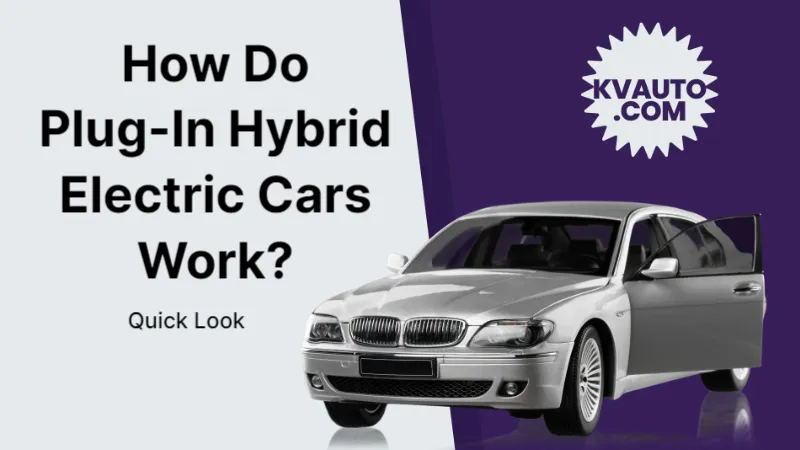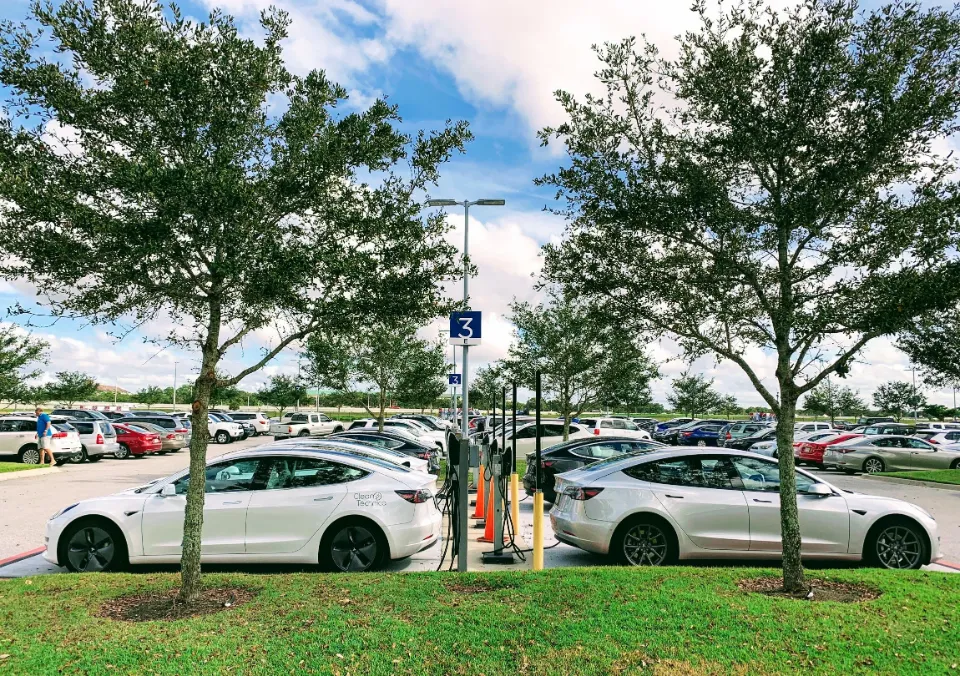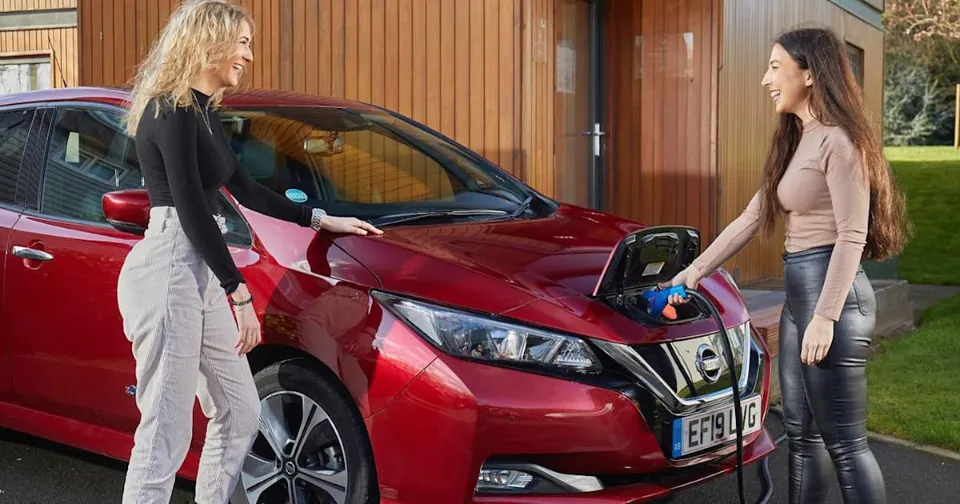Here’s the answer to “How Do Plug-In Hybrid Electric Cars Work?” In plug-in hybrid electric vehicles (PHEVs), an internal combustion engine (ICE) is powered by another fuel, such as gasoline, while an electric motor is powered by batteries. The ICE, a wall outlet, a charging device, or regenerative braking can all be used to charge PHEV batteries. Usually, the car runs on electricity until the battery is almost completely gone, at which point it switches over to using ICE.
What is a Plug-In Hybrid Electric Vehicle?
PHEVs have both an internal combustion engine and an electric motor. The former makes use of a fuel source, typically gasoline. Batteries that are charged via plugging in and regenerative braking power the electric motor.
Here is a quick look at Hybrid Vs Gas Car. A gas-powered car only has a traditional gas engine, while a hybrid vehicle also has an electric motor. Since hybrid vehicles can switch between their gas and electric motors while being driven, they typically have higher fuel efficiency than their gasoline-powered counterparts.
How Do Plug-In Hybrid Cars Work?
PHEVs can typically go a certain distance on electric power alone. The vehicle can use the gas engine, though, once the batteries are exhausted by the electric motor.
A hybrid car runs on both gas and electricity. The face of environmentally friendly driving options has been drastically altered by this technology. Read on to find out more about Hybrid Car Batteries.
For drivers who tend to stay relatively close to home or have the ability to charge on the go, they might be able to run primarily from electricity.
Owners of plug-in hybrid vehicles frequently value the convenience of home charging. The most popular options are a Level I charger using a standard wall outlet or upgrading to a Level II charger with 240 volts. Also available are public charging stations in stores, gas stations, and parking lots for use by drivers who have PHEVs. As PHEV adoption rises, these public charging stations will become more and more popular. They can be a great option for companies looking to differentiate their customer experience.
What are Hybrids Vs. Plug-in Hybrids, and how do the two types of vehicle compare?

Plug-in Hybrid Features
PHEVs combine the fuel-savings benefits of hybrids with the all-electric capabilities of battery-electric or fuel-cell vehicles.
While not all models work the same way, most plug-ins can operate in at least two modes: “all-electric,” in which the motor and battery provide all of the car’s energy; and “hybrid,” in which both electricity and gasoline are used. PHEVs typically begin in all-electric mode and continue in this mode until their battery pack is completely depleted. Their ranges range from 10 to more than 40 miles. Certain models switch to hybrid mode when they reach highway cruising speed, generally above 60 or 70 miles per hour. (Are hybrid cars good for long distance driving? How far a typical hybrid can travel will be covered in this blog.)
The electric motor and battery help PHEVs use less fuel and produce less pollution than conventional cars, even when in hybrid mode. Idle-off saves fuel by turning off the engine while it is idle at stoplights or in traffic. Some of the energy lost during braking is converted by regenerative braking into usable electricity that is stored in the batteries. Additionally, smaller engines can be used to increase the car’s fuel efficiency without sacrificing performance because the electric motor supplements the engine’s power.
Drivetrains, the mechanical elements that transfer power to the driving wheels, can vary between plug-in hybrid electric vehicle models.
You may want to know: We’ll examine the four main types of hybrid vehicles in this article and discuss what makes each one distinctive. They are Mild Hybrids, Full Hybrids, Plug-In Hybrids, and Electric Vehicles with Range Extender Hybrids. Continue reading.
Differences Between Plug-in Hybrids and Other EVs
Conventional hybrids have an electric motor and battery, like plug-ins, but derive all their power from gasoline or diesel and can’t be recharged by plugging in. Because of this, non-plug-in hybrids aren’t considered electric vehicles (“EVs”). Learn more about the operation of hybrids.
Battery electric vehicles only have an electric motor and battery, deriving all their power from plugging in. Battery electric vehicles, as opposed to PHEVs, lack an internal combustion engine and are therefore unable to function as hybrids. However, because they are entirely powered by electricity, they don’t have any exhaust emissions and can be charged using renewable energy sources without producing any emissions while being driven. Find out more about the operation of battery-powered electrical systems.
Fuel cell electric vehicles power an electric motor and battery by converting hydrogen gas into electricity. Although only recently available for purchase, fuel-cell cars show great promise as a low-carbon, environmentally friendly technology.
Suggested reading: Thankfully, the market for used hybrids is rich enough for us to pick and choose those with the highest safety and reliability ratings, plus low overall cost of ownership. The best used hybrid cars are those listed here.
Benefits and Drawbacks of Plug-In Hybrids
Both benefits and drawbacks exist for PHEVs. Let’s explore both.
Benefits of Owning a PHEV
Plug-in hybrids can significantly reduce tailpipe emissions and fuel costs for drivers who charge frequently. Usually, the fuel savings increase with how much of the hybrid is operating in electric mode. Solar electricity can be used by households with solar energy systems to charge their PHEVs.
In addition, a lot of people are worried about the environment and the effects of greenhouse gas emissions on climate change. Less air pollution results from the car operating more frequently in electric mode.
Editor’s Advice: How Much Does a Hybrid Battery Cost? Compared to conventional gasoline-only vehicles, hybrids use different batteries, and their prices range from $1,000 to $8,000. The final cost you’ll incur is determined by the make and model of your car as well as whether you choose a new or refurbished battery.
Drawbacks to Consider When Looking to Buy a PHEV
Some drivers might not have easy access to an EV charger or find charging to be inconvenient. For those who live in multi-unit buildings, this presents a particular challenge. If a PHEV isn’t charged, the driver will miss out on the advantages, and the car will get similar gas mileage as a typical hybrid vehicle.
Additionally, PHEVs typically cost more than HEVs because they require a larger battery. This indicates that if the battery is not regularly charged with electricity, some of its capacity will be lost.
Related: How Long Do Hybrid Car Batteries Last? About 100,000 miles should be covered by the majority of hybrid batteries. Some owners are able to increase this number to 200,000 with excellent maintenance.

How Do PHEVs Impact the Environment?
PHEVs can significantly reduce tailpipe emissions because they frequently only require an electric motor to operate. As a result, drivers won’t need to fill up as frequently. The frequency with which the car operates in electric mode will determine the precise amount of emissions reduction.
The car will emit roughly the same amount of emissions as an HEV without plug-in capabilities if the driver never charges it. On the other hand, PHEVs can significantly lower greenhouse gas emissions when they are regularly charged with clean electricity.
Remember that the PHEV’s environmental impact is influenced by the source of electricity. The advantageous effect, for instance, is reduced if the electricity is produced by a coal power plant. However, using wind or solar energy to charge PHEVs significantly reduces carbon emissions. Additionally, recycling as many parts of the car as you can, including the lithium-ion car batteries, is important to reduce the environmental impact of the vehicle when it reaches the end of its useful life.
Editor’s tip: Just like with all cars, your Prius’ battery will eventually need to be replaced. But when will that be? How long do Toyota Prius batteries last?
Summary: How Do Plug-In Hybrid Electric Cars Work?
Internal combustion engines (ICEs) are powered by gasoline-powered internal combustion engines (ICEs) and electric motors, respectively, in plug-in hybrid electric vehicles (PHEVs). ICE or regenerative braking, wall outlets, charging apparatuses, or PHEV batteries can all be used to recharge them. Typically, cars run on electricity until the battery is almost completely depleted, at which point they switch to using ICE.
READ ABOUT





